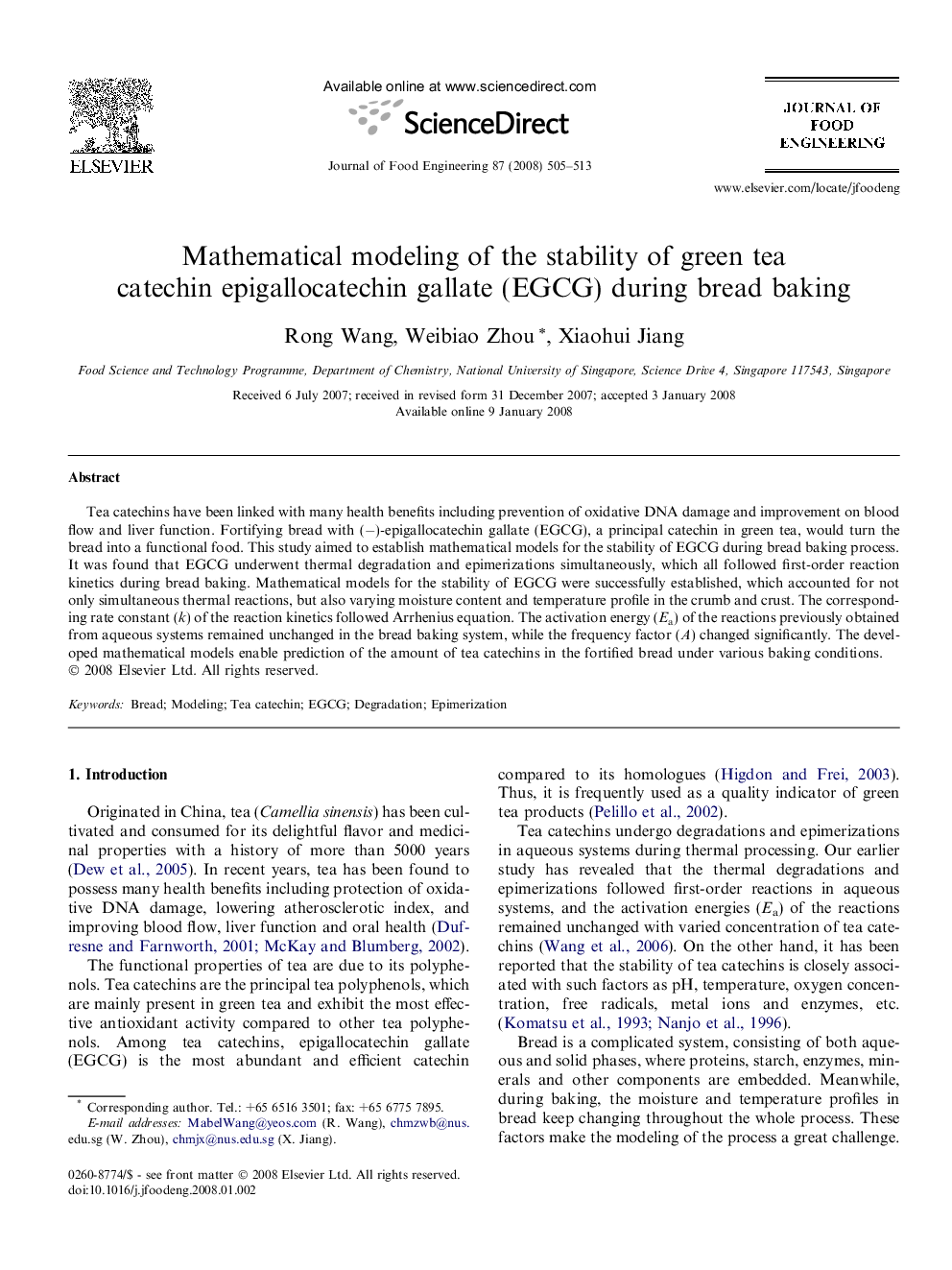| Article ID | Journal | Published Year | Pages | File Type |
|---|---|---|---|---|
| 225256 | Journal of Food Engineering | 2008 | 9 Pages |
Tea catechins have been linked with many health benefits including prevention of oxidative DNA damage and improvement on blood flow and liver function. Fortifying bread with (−)-epigallocatechin gallate (EGCG), a principal catechin in green tea, would turn the bread into a functional food. This study aimed to establish mathematical models for the stability of EGCG during bread baking process. It was found that EGCG underwent thermal degradation and epimerizations simultaneously, which all followed first-order reaction kinetics during bread baking. Mathematical models for the stability of EGCG were successfully established, which accounted for not only simultaneous thermal reactions, but also varying moisture content and temperature profile in the crumb and crust. The corresponding rate constant (k) of the reaction kinetics followed Arrhenius equation. The activation energy (Ea) of the reactions previously obtained from aqueous systems remained unchanged in the bread baking system, while the frequency factor (A) changed significantly. The developed mathematical models enable prediction of the amount of tea catechins in the fortified bread under various baking conditions.
